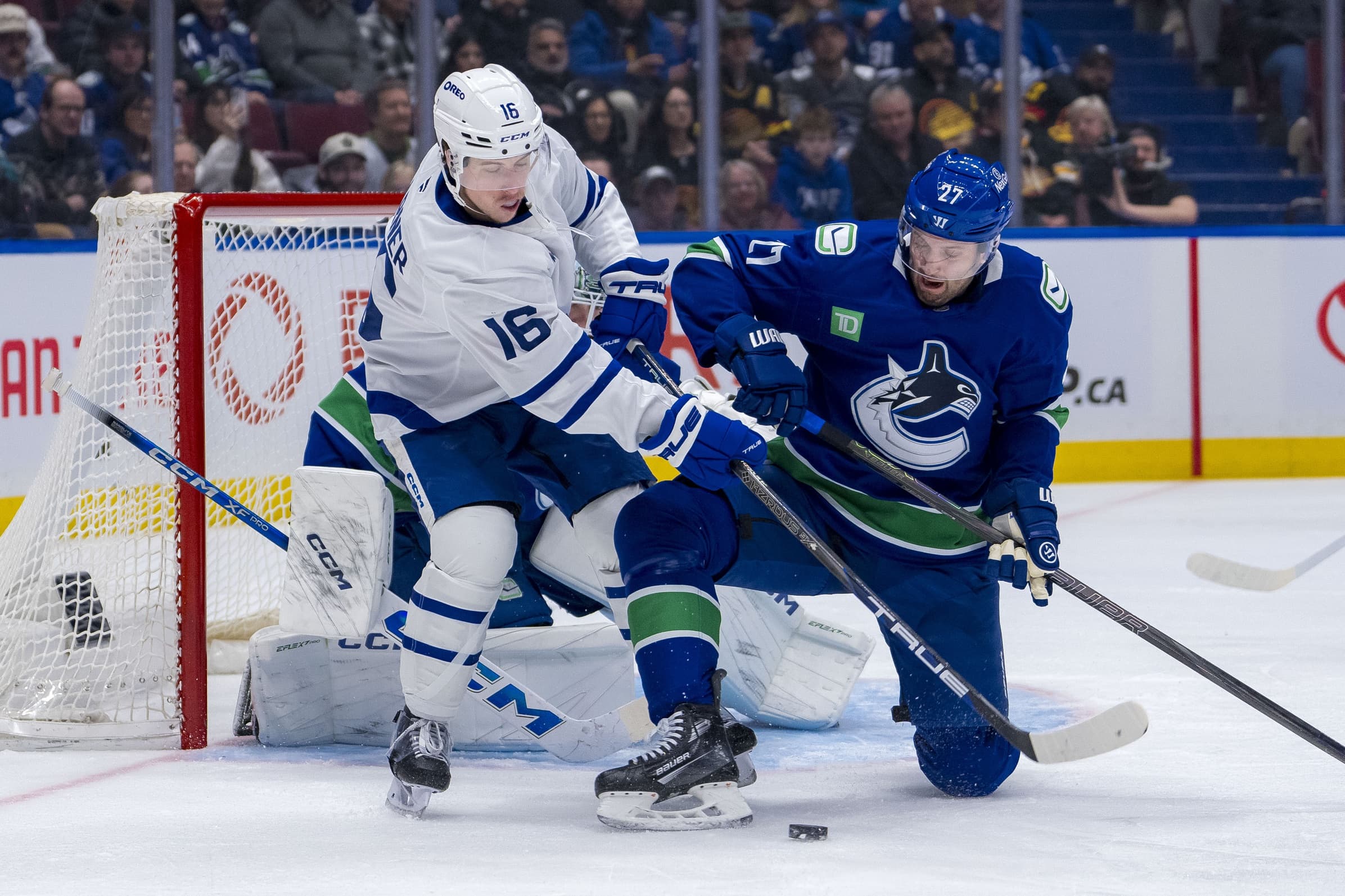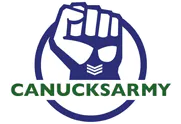Nation Sites
The Nation Network
CanucksArmy has no direct affiliation to the Vancouver Canucks, Canucks Sports & Entertainment, NHL, or NHLPA
The Canucks have secured offseason cap space, now what do they need to spend it on?

Photo credit: © Bob Frid-Imagn Images
Mar 11, 2025, 09:00 EDTUpdated: Mar 10, 2025, 20:53 EDT
The 2024/25 Vancouver Canucks season is still playing out. But as it is, the 2025/26 edition of the team is simultaneously starting to take shape. And for many who have already lost most of their hope in this year’s team achieving any sort of success, that’s a good thing.
The 2025 Trade Deadline has come and gone without much in the way of change, save for the departure of Carson Soucy. The lack of both trades and contract extensions for pending free agents have left us with a rough, skeletal outline of next season’s Canucks roster, as well as the amount of cap space they’ll have on hand to supplement said players.
Earlier in the week, we took a shot at cobbling together this rough draft roster and came up with the following:
DeBrusk ($5.5m) – Pettersson ($11.6m) – Garland ($4.95m)
Joshua ($3.25m) – Chytil ($4.44m) – Lekkerimäki ($918k)
O’Connor ($2.5m) – Blueger ($1.8m) – Höglander ($3m)
Räty ($1m) – Sherwood ($1.5m)
Hughes ($7.85m) – Hronek ($7.25m)
M. Pettersson ($5.5m) – Myers ($3m)
E. Pettersson ($838k) – Willander ($918k)
Demko ($5m)
Lankinen ($4.5m)
That’s a collection of 19 players, with only two not under contract for 2025/26 (Aatu Räty, a pending RFA, and Tom Willander, who has yet to sign with the team – both have had their cap hits estimated here).
And it’s 19 players that, barring any trades, we have good reason to believe will be on the team next year.
That leaves the Canucks with (at least) four more roster spots to fill out, and some $14.7 million in cap space with which to do so.
What are the priorities?
It might be best to start with the easiest area to sort out; and in a sign of great sea-change, that’s the blueline. So long as Willander makes a clean transition into NHL hockey, the above looks like a perfectly capable set of six defencemen. And if Willander isn’t ready right off the bat, his spot probably goes to another young RHD in Victor Mancini.
With Willander and the younger Elias Pettersson on the roster, the goal will be to play them as much as possible. That means any extra blueliners are destined to spend a lot of time in the pressbox, or to do so at least until injuries occur.
That means the Canucks probably won’t be breaking the bank on blueliners. Whether that means bringing Derek Forbort back on a similarly-priced contract, or just picking up some depth off the free agency pile, the Canucks will almost certainly be able to staff out their back-end with a couple cheap contracts that don’t add up to any more than $2.5 million.
Adjusting the forward lines will take considerably more work. One can look at the currently-slated 2025/26 top-six of Elias Pettersson, Jake DeBrusk, Conor Garland, Filip Chytil, Dakota Joshua, and Jonathan Lekkerimäki and easily see it as a group needing improvement, and perhaps major improvement at that.
Unless Pettersson fully bounces back, unless Joshua starts scoring again, and unless Lekkerimäki can instantaneously translate his AHL goal-scoring to the big leagues, this is not a good enough top-six for a contender to be sporting. And even if all those things come to pass, it’s probably still a group with a clear-cut need for an upgrade.
There will be money to spend on said upgrades. Figuring out how much money is the tricky part.
Several genuine superstars are on the UFA market this summer. But they’ll cost an awful lot to acquire, especially with that big cap increase leading to massive inflation.
Mitch Marner, for example, probably costs about $13 million annually. A Sam Bennett, meanwhile, probably runs at least $10 million. Nikolaj Ehlers probably gets as high as $8 million or more.
We’ve heard on relatively good authority that the Canucks gave Brock Boeser a ‘final offer’ of some $8 million annually on a five-year term. That gives us a rough budgetary idea of what they’d be looking to spend on a top-six supplement.
But it could easily be more than that.
Spend cash on a top-six forward (and at least one other forward, as the roster requires), and that $14.7 million in cap space gets eaten up pretty quickly. A Boeser-type contract takes up more than half of it. A Marner-type would take up darn near all of it, leaving a shoestring budget to fill out the rest of the roster – which might be workable.
Flexibility is nice, but talent is nicer. Sign a high-profile UFA forward for some $10 million, spend about a million each on two spare defenders and an extra forward, and the Canucks would still come in under the cap.
Or sign two medium-profile UFA forwards at about $4 and $6 million each. Or one at $8 million and another at $2 million. (We realize that signing free agents isn’t the only way to add to the roster and that trades are also possible, but it’s simpler to talk about UFAs for now.)
The points to be made here are both that the Canucks have options and cap space, but that they don’t have either in unlimited capacity. The decisions made with money this summer might be a little easier than they have been in the past, but that doesn’t mean they’ll be easy.
One issue at hand is a general lack of depth on the roster as it stands now. The 2025/26 Canucks need additions, not subtractions, and one has a hard time looking at the lineup and picking out anyone the Canucks could do without.
The one notable exception here is Thatcher Demko, currently slated to play the backup role, yet outearns his starter, Kevin Lankinen. That $5 million sitting on the bench (or on IR) is less than ideal, and if the Canucks can find a new home for Demko this offseason, there’s an easy gain in cap space right there.
Of course, trading Demko would necessitate the bringing in of a backup, either through the promotion of Arturs Silovs or the signing of somebody new. In any case, this new goalie certainly wouldn’t be making $5 million, and so the Canucks could definitely find themselves with a few extra million on hand.
Will it be enough? That’s impossible to say at this point. But it should be enough for the Canucks to add at least one genuine top-six forward, in addition to the depth pieces they will need. And in a scenario where the Canucks do trade Demko, they could be sitting on nearly $20 million in cap space with which to sign two forwards, two spare D, and a backup goalie.
That could very well be enough for both a high-profile and a medium-profile add up front. Bringing such players into the fold would definitely make the 2025/26 Canucks a stronger franchise than they currently appear to be on paper.
Strong enough to right the ship and bring this team back closer to contender status?
That will depend on who exactly this money winds up being spent on.
Sponsored by bet365
Breaking News
- Quinn Hughes talks thought process in lead-up and aftermath of trade from Canucks to Wild
- Wagner’s Weekly: After Hughes trade, which Canuck will get traded next?
- The Stanchies: Zeev Buium’s two point debut leads the way in Canucks’ 2-1 victory over Devils
- Canucks forward Lukas Reichel clears waivers
- Instant Reaction: Zeev Buium scores game-winning goal in Canucks debut vs. Devils
